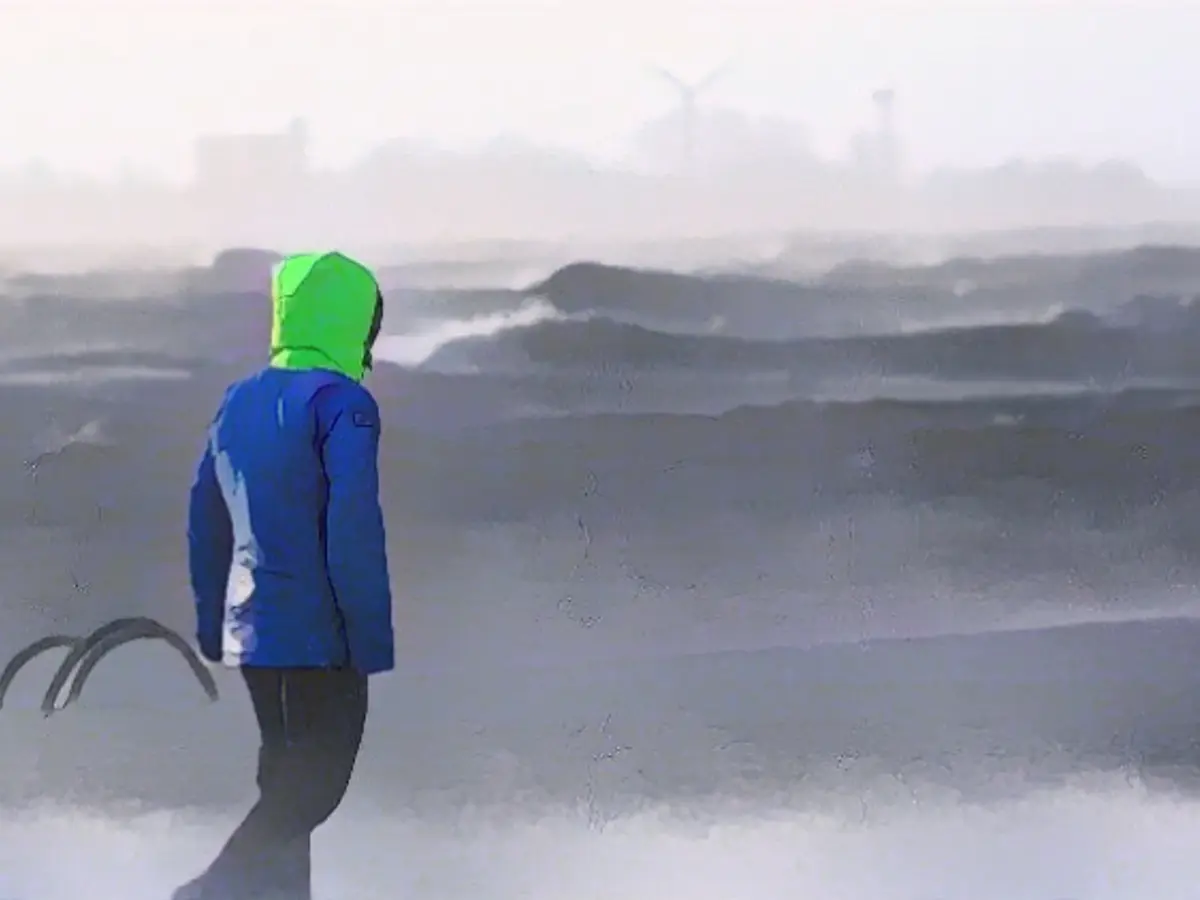Are extremes the new normal?
Historic heatwaves in southern Europe, lightning droughts versus continuous rain and severe storms, including the warmest year on record in Germany. A look at the extremes of 2023 is also a bad omen for next year.
The weather year 2023 was not short on extremes: The developments and events of the past twelve months can hardly be summarized succinctly from a meteorological perspective - the year was too diverse for that. From a super mild start to a spring with a rather cool April and rapid drought development in early summer, to a partly rainy midsummer and a summery, ambitious September.
Then it continued with plenty of rain and a massive onset of winter with record amounts of snow in some regions, followed by a thaw and more constant rain. And even though this year's peak temperature of just under 39 degrees Celsius was not enough to reach 40 degrees again and there were no massive heatwaves, at least in Germany, we are still heading for the warmest year on record with regional rainfall records.
Record Mediterranean heat and extreme weather conditions
While our summer was less hot, the Mediterranean has been boiling at record levels since spring. In July, all Mediterranean countries experienced a heat bubble from the depths of the Sahara with simultaneous peaks of over 40 degrees, meaning that new temperature records were also set in the Mediterranean. An explosive mixture for some of the most severe storms. Take, for example, the record hail in northern Italy with around 19 centimetres or various storms and heavy rainfall events that repeatedly reached Germany via Slovenia and the Alps, among other places. The triggers were repeatedly intense lows, such as Zacharias, which had an enormous impact on the weather in the extreme and energetic mix of air masses.
A trend that does not bode well
For many of us, the question naturally arises as to whether these extremes will become the new normal. And unfortunately, the long-term trends are pointing in exactly this direction. In Germany, stationary weather conditions are becoming more frequent - with serious consequences. While there were many severe weather lows in the summers around 2015 and 2016, for example, from 2018 onwards there were more and more persistent high-pressure conditions with drought, which were then increasingly accompanied by severe heatwaves. Even what felt like a mild summer, as in 2023, did not prevent the year as a whole from ultimately reaching record levels.
Where do these contrasts come from?
Basically, there are various approaches that explain why things are developing the way they are. One valid approach is that the polar latitudes are warming faster than the tropical latitudes due to climate change. This reduces the dynamics of our weather patterns and at the same time ensures the accumulation of stationary, i.e. long-lasting weather conditions. For us in Germany and in Europe, for example, this in turn means that highs and lows can last longer and, for example, heat bubbles from southern regions can spread much further and more intensively.
Forecasts for 2024
It is highly likely that the trend towards longer-lasting weather conditions will continue. It remains to be seen how the highs and lows will ultimately be distributed. Unfortunately, however, there are currently no signs that we in Germany and Europe will be spared increasing extreme weather events at a regional level. Quite the opposite, as the intensive weather, storm, rain and flood development also shows us in the last few meters of 2023.
And finally, there is another fact that points to a further increase in extreme weather scenarios: Higher temperatures also mean more and more potential energy for individual severe weather events. Even if no one is currently able to estimate which side of the extremes we will slide to in 2024. From wet to dry or from hot to humid and explosive - everything is possible and unfortunately equally likely.
Ways out of the extreme weather world
The past few years have repeatedly shown where things are going wrong. Whether it's dealing with heatwaves, too much or too little rain. The drought problem in particular is a completely new type of problem for us. After all, we are simply ill-prepared for persistent water shortages. At the same time, we need to stand up to climate change, while of course not neglecting the finer things, such as a well-deserved vacation.
Whether we will slip south into the merciless heat and drought, however, can only be predicted in the short term, which perhaps makes prompt booking an option. And regardless of this, the surrounding area also has its beautiful sides - and can perhaps be explored in a more climate-neutral way.
Read also:
- Snow chaos further restricts Bavaria
- "Zoltan" sweeps across the country - disruptions to rail traffic
- Unanimous decision: faster wolf culls possible
- The year of climate records: extreme is the new normal
In the context of global weather patterns, Sweden's meteorologist Björn Alexander also noted the increase in extreme weather events, such as the record-breaking Mediterranean heat and extreme weather conditions, which were responsible for the record hail in northern Italy and numerous severe storms affecting Germany. These weather extremes, including historic heatwaves and droughts, provide a worrying sign that such events could become the new norm, as reflected in Germany's meteorological records for the year 2023.
Source: www.ntv.de






